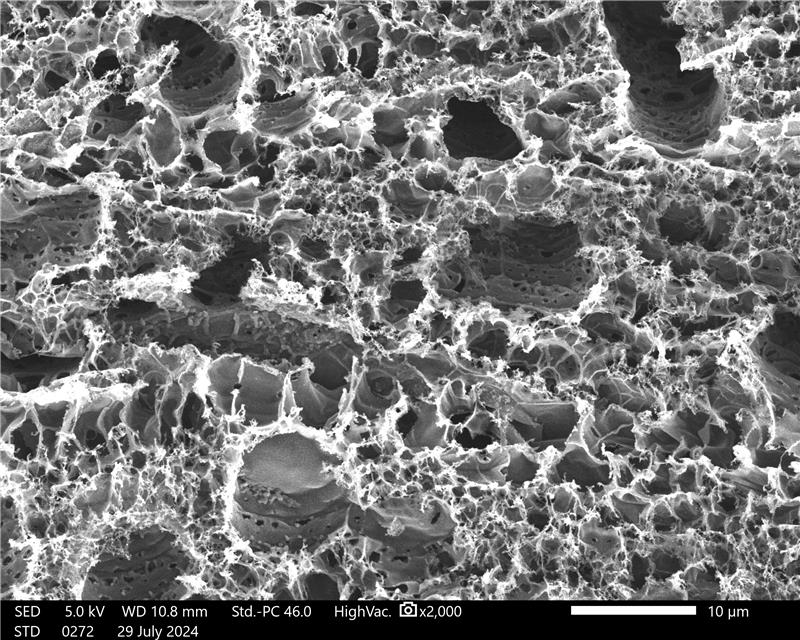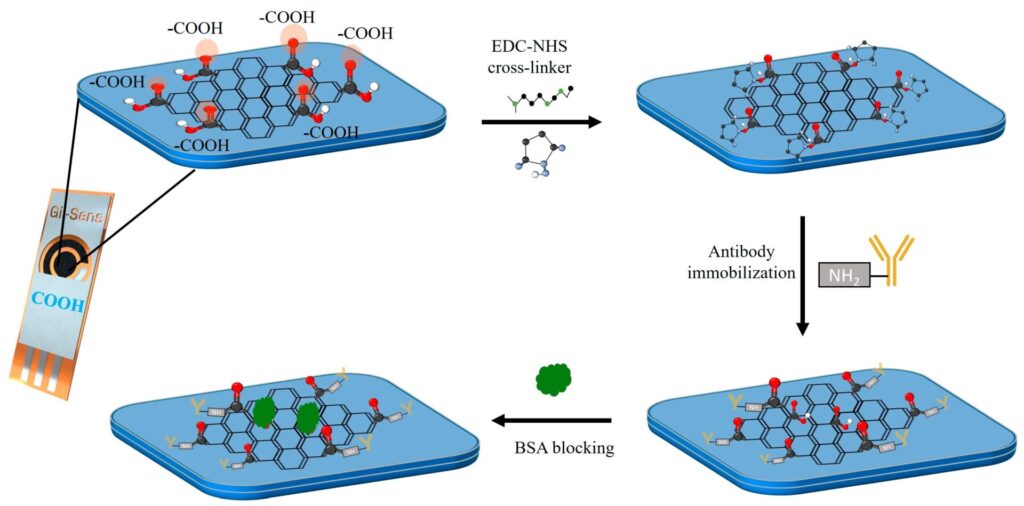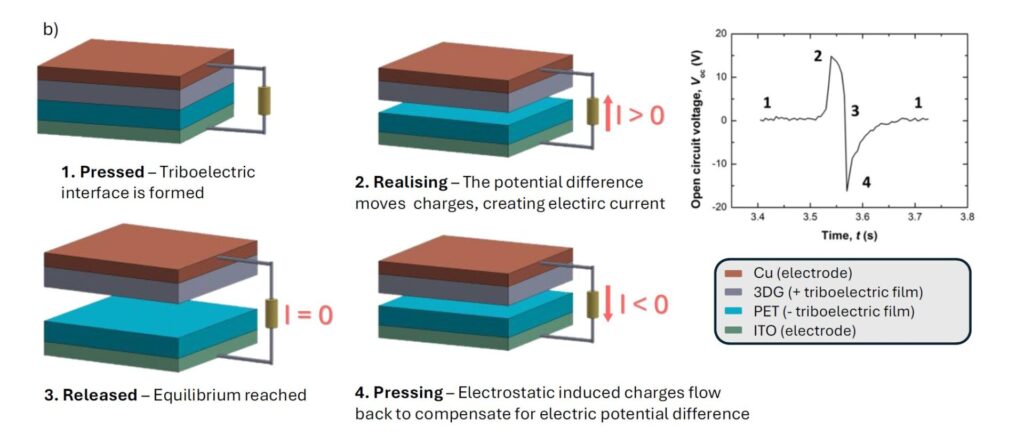
pH Effects on Graphene Foam Capacitance Induced by Adsorption of 1-pyrenemethylamine
Highlights
-
Observation of strongly enhanced capacitance (quantum capacitance) when adsorbing 1-pyrene-methylamine to graphene foam.
-
Proton activity specific sensor response in both aqueous buffer media and in human serum.
-
Electrochemical impedance-based capacitance sensing with future opportunity to employ wireless capacitance readout.
Abstract
The interfacial capacitance of graphene foam electrodes (Gii-Sens) in contact to aqueous media (determined by electrochemical impedance spectroscopy) is strongly affected by adsorption of 1-pyrenemethylamine (PMA).
An order of magnitude increase in capacitance upon adsorption is ascribed predominantly to the quantum capacitance contribution (i.e. changes in the electronic density of states in graphene layers) in response to the cationic adsorbent.
A change in capacitance (reversible) is observed as a function of pH. Although likely to be linked to the amine protonation, the change in measured capacitance occurs over a wide range of pH values (approx. linear from pH 2 to pH 12) and could provide a diagnostic capacitance-based tool for pH.
Exploratory measurements in pure human serum (with pH adjustment) suggest that the capacitance effect is specific to protons and correlated to pH even in complex sensing media. However, the response of the graphene foam electrode surface is sensitive to the preparation and storage conditions and currently not fully understood.
Introduction
Graphene foam electrodes and capacitors have emerged from studies of graphene electrode materials.
Although graphene as an additive in electrode materials is now ubiquitous, graphene foam electrodes in electroanalysis require more study. Pyrene modification of graphene surfaces has been widely employed to functionalise and modify surfaces. Pyrene-appended boronic acids have been attached to graphene foam to detect glucose or lactate.
In addition to amperometric or voltammetric methods, capacitive sensing on graphene foam was reported and suggested to be due to the effects of cationic adsorbates (or more generally due to bound charges) on the interfacial capacitance. These effects have been attributed partly to density of state changes, similar to those reported for electrostatic gating in graphene field-effect transistors.


